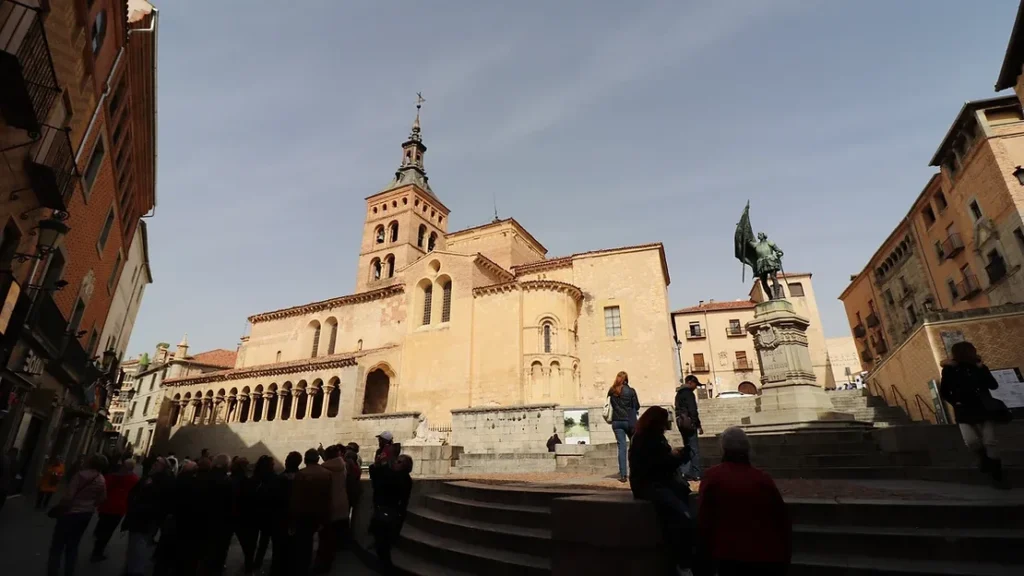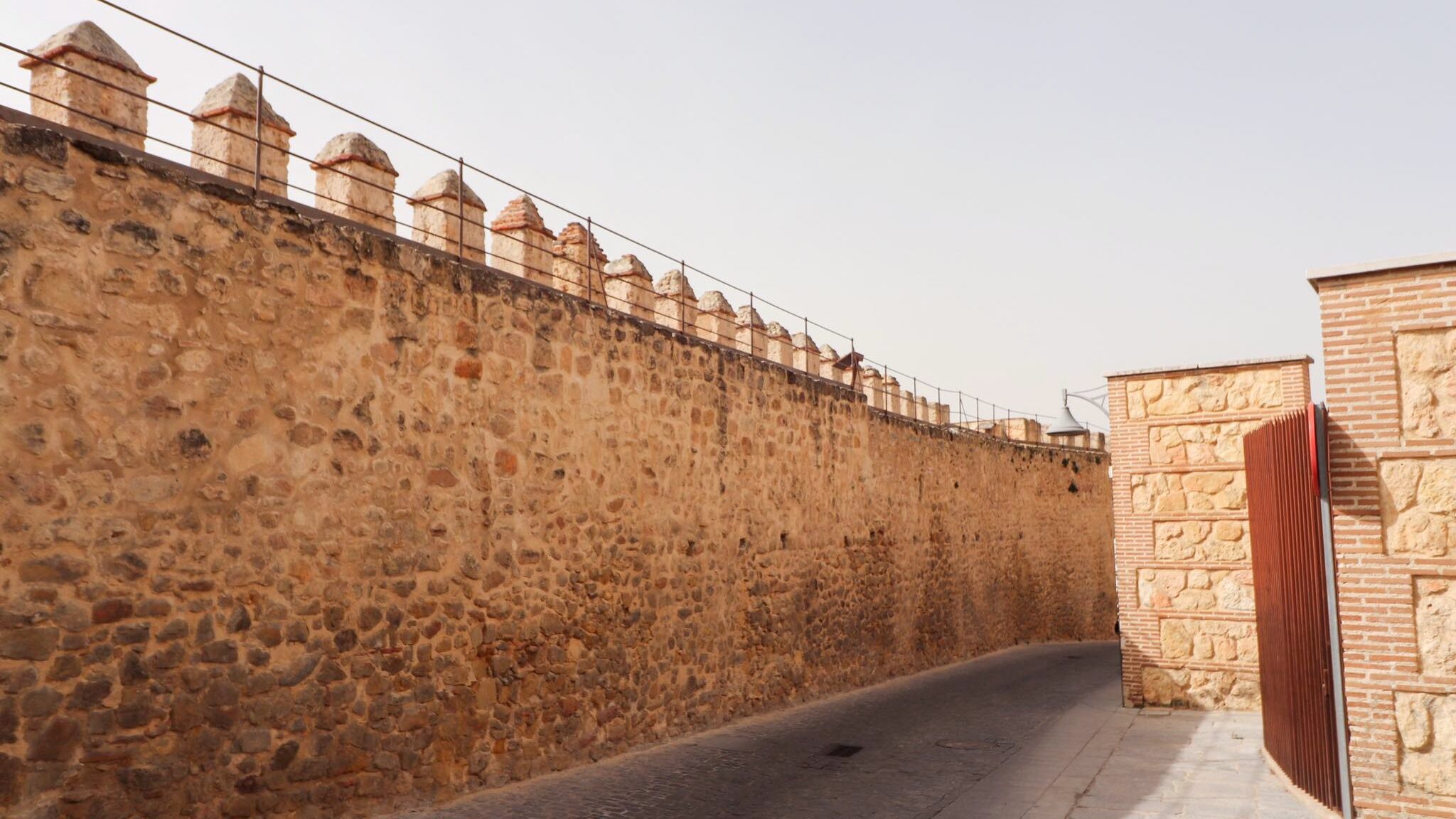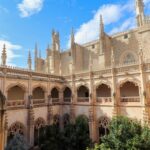Those of you who have heard of Segovia before will be well aware of its 3 main historical landmarks – the cathedral, the castle, and the Roman aqueduct. While Segovia is one of the best day trips from Madrid to go on, it may be worth spending a couple of nights here so you can fully explore this beautiful UNESCO World Heritage Site. There are plenty of things to do in Segovia other than visiting its most well known attractions, and you’ll most likely find some beautiful hidden gems tucked away down the side streets. Segovia is also fairly close to Toledo, another historic city near Madrid worth visiting, especially if you’re planning a road trip around Spain.
Segovia itself dates back to Roman times, with much of its Roman past still on display today, and it has a beautiful medieval old town that’s been perfectly preserved. Apart from the historical attractions in Segovia, the city is also very famous for its traditional roast suckling pig, which draws people from all over the region during weekends, and is very popular with the locals.
One thing’s for sure, whether you go to Segovia for the historical sites or for its gastronomy, you’ll definitely need to wear a pair of comfortable trainers to walk around the old town! Here are the best things to do in Segovia, either during a day trip or over a period of a couple of days.
Things to do in Segovia
1. Visit Iglesia de San Millan

One thing you’ll notice while you’re walking around the streets of Segovia’s old town are the numerous impressive Romanesque style churches that the city has. Iglesia de San Millan is one of these churches. This church dates back to the 11th century, and is beautiful to walk around inside. Its interior is quite dark, but it has a number of impressive pieces of art hanging on the walls. We were lucky to just sneak inside a few minutes before the church closed. Don’t forget to add this to your list of things to do in Segovia and make sure you visit earlier in the day to avoid disappointment.
2. Take a photo of Iglesia de San Clemente

Another church we were lucky to stumble upon, and one that wasn’t on my list of things to do in Segovia, was Iglesia de San Clemente. This Romanesque church dates back to the 12th century, and is probably one of the more overlooked attractions in Segovia. It sits in between Iglesia de San Millan and the Roman aqueduct, so you’ll probably end up walking by it even if it isn’t on your itinerary. It was unfortunately closed when we walked by, but it’s a beautiful building to look at from the outside. It’s interesting to see the contrast between the church and the modern buildings that now surround it too.
3. Stop for some Churros

One thing you need to add to your list of things to do in Segovia is to stop for some churros. In Spain they’re considered a breakfast food, but if you’re not keen on eating these in the morning, you can have them for an afternoon snack too. There are plenty of restaurants in Segovia that serve churros, so do some research beforehand and find one that’s in the area you’re planning on visiting.
4. Marvel at Acueducto de Segovia

The Acueducto de Segovia is a must-see attraction in Segovia and is hard to miss. The aqueduct is considered to be the most important example of Roman civil engineering in Spain, and was completed somewhere between the 1st and 2nd century AD. It was completely restored in 1484 on the orders of the Catholic monarchs, and has been actively used ever since.
If you’re interested in seeing more of this stunning aqueduct, many people opt for the tourist route which follows the aqueduct and the flow of water through the historic city. To the left of the aqueduct you’ll find a series of steps that lead up to a viewing platform that’s almost at the same level as the Roman structure. If you continue to follow the path through the old town it will connect you to the cathedral. You’ll want to add the aqueduct right at the top of your list of things to do in Segovia.
5. Walk to Casa de los Picos

Not far from the aqueduct, on the way to the cathedral, is this interesting building known as Casa de los Picos. It was built in the 15th century, and has a total of 617 granite pyramids sticking out of its wall. It’s one of the more unique places to visit in Segovia. If you’re interested in art it’s now home to the Segovia Art School and exhibition hall where you can take a look at some of the student’s artworks on display.
6. Take a break at Mirador de la Canaleja

Directly next to Casa de los Picos is a nice viewpoint showing a different part of Segovia called Mirador de la Canaleja. You won’t see any of the main attractions in Segovia from this viewpoint as it faces outwards towards the rest of the city with the mountains in the background. However, it makes for a nice photo opportunity. If you’re on a day trip to Segovia, you can easily visit this viewpoint as it’s less than a 5 minute walk from the aqueduct. While it may not be one of the main things to do in Segovia, it’s worth a quick look.
7. Stroll along Calle Juan Bravo

One of the main streets in Segovia’s historic centre is Calle Juan Bravo. The great thing about Segovia is that all of its main attraction are easily within walking distance of one another, and are more or less connected by this street. The street itself is lined with quaint shops selling everything from clothes to traditional food. There are numerous cafes and ice cream parlours along it as well. I would recommend checking out some of the shops along here and buying some souvenirs
8. Spend some time in Plaza de Medina del Campo

Halfway between the aqueduct and the cathedral is a pretty plaza called Plaza de Medina del Campo. It’s considered to be one of the most beautiful plazas in Spain because of its Italian resemblance. This is where you’ll find another beautiful Romanesque church – Iglesia de San Martin. The church dates back to the 12th century, and is an imposing figure within the plaza. This plaza is definitely worth adding to your list of things to do in Segovia (and there’s a traditional ice cream parlour here too).
9. Go inside Iglesia del Corpus Christi

At the entrance to Segovia’s Jewish Quarter is Iglesia del Corpus Christi. Prior to 1410 this church was a synagogue, and it’s one of the best preserved in the city. We came across this building by chance, after following a group on a guided tour of Segovia through an archway, and were glad that we visited. The cost is only €1 to enter, and it goes towards the preservation of the church. It isn’t one of the main tourist attractions in Segovia, but it’s worth popping your head into if you have some spare time.
10. Step back in time in the Jewish Quarter

Walking through the Jewish Quarter is definitely something you need to add to your list of things to do in Segovia. This historic quarter is basically just a street, so it’s easy to add in to your itinerary. In the 13th century the Jewish population was spread out throughout the city, but by the reign of the Catholic monarchs (towards the end of the 15th century) the Jews were segregated from the rest of the population throughout Spain.
In Segovia, this meant that they were forced to reside in this part of the city, and by 1492 many were expelled from the country or forced to convert to Catholicism. The quarter has recently been restored and looks more or less how it would have done in the medieval period.
11. Walk along the Murallas de Segovia

The Murallas de Segovia are what remains of the medieval city walls, and have been declared a UNESCO World Heritage Site. The foundation of these walls date to the Roman period, around the year 200. The walls that we see today date back to the 11th century. By the 16th century the walls ceased to be used for defensive purposes, and started to have houses attached to them. You can see the city walls throughout the perimeter of the historic centre, and they are definitely something you should see in Segovia. It’s also one of the best free things to do in Segovia!
12. Go to the entrance of Puerta de San Andres

One part of the city walls that you simply can’t miss is Puerta de San Andres. It’s located right next to the Jewish Quarter and is stunning to see in person. The height of the gate makes it difficult to fit it all in one photo, but if you back up down the street a little you should be able to snap a full length photo.
The gate was built in the 11th century, and although it’s undergone a series of alterations over the centuries, it still maintains its original layout. The road it’s located on isn’t busy, but the cars come around the corner very quickly so stay alert! This gate is sometimes overlooked by tourists, but it’s definitely worth adding to your itinerary of things to do in Segovia, and is easy to locate from the main streets.
13. Check out the other side of Puerta de San Andres

While one side of Puerta de San Andres is an imposing defensive structure, the other takes on a more residential appearance. This is because by the 16th century, the city walls were no longer needed for defence, and were used for various building projects as the city began to expand. This is also the location of the tourist information point for the city walls, so if you’re interested in learning more about its history you can find a lot of helpful information here.
14. Rest your feet in Plaza de la Merced

There are plenty of historic plazas in Segovia to visit. One of the more underrated plazas is located only a few minutes walk from the city walls and the Jewish Quarter. Plaza de la Merced is what I would call a hidden gem in Segovia, and it wasn’t even on our list of places to visit in Segovia. I was actually trying to locate the cathedral and Google Maps made us cut through this park area, which is how we found it. Construction began on this plaza in 1843, and it was the first public garden to be built by the council within the walled part of the city.
15. Explore the buildings that make up Plaza Mayor

If you’re looking for the main square in Segovia, you’ll want to head to Plaza Mayor. This historic plaza was originally called Plaza de San Miguel, named after a church that once stood here. It was in this church that Queen Isabella was proclaimed Queen of Castile in 1474. The plaza is really beautiful to walk around, and if you’re lucky you’ll come across an outdoor market here too. There are a couple of gift shops around the plaza which are handy if you want to grab a quick souvenir of Segovia.
16. Plan a visit to Catedral de Segovia

You can’t say you’ve been to Segovia without visiting the Catedral de Segovia. It sits at the far end of Plaza Mayor, and is one of the main attractions in Segovia. This Roman Catholic cathedral is dedicated to the Virgin Mary, and was built to replace the city’s original cathedral that was located next to the alcazar in the 16th century.
Its architecture is beautiful to look at from the outside, and if you want to visit its interior it costs only €3 for a self-guided tour. You have the option to climb up the tower for an additional €7. Visiting the cathedral is one of the best things to do in Segovia and it attracts over 100 000 visitors a year to its doors.
17. Take in the views from Mirador del Valle del Clamores

While we were walking from the cathedral to the castle, we came across a beautiful viewpoint that looked back towards the main plaza. Mirador del Valle del Clamores is located just before the entrance to the castle, and is part of the city walls. You can get a great view of the walls from this spot, as well as a forested area below. The cathedral rising up over the buildings of the historic old town is also a special sight to see from here. It’s worth stopping at this viewpoint to take a quick photo before continuing on to the castle.
18. Explore the Alcazar de Segovia

Alcazar de Segovia is one of the most beautiful castles I’ve visited, and it was one of the castles that was used as inspiration for Disney’s Snow White and Cinderella. The castle was built in the 12th century, and throughout the middle ages was a favourite residence of the monarchs, including Queen Isabella. It costs €6 to enter the castle, but if you don’t have time to go inside, it’s completely free to walk around the grounds in front of it. This is by far one of the best things to do in Segovia for anyone visiting the city.
19. Get a view of the castle from Mirador de la Pradera de San Marcos

Seeing the Alcazar de Segovia up close is great, but if you want a spectacular view of the castle in all of its glory I would recommend hiking down (or driving if you’ve rented a car) to Mirador de la Pradera de San Marcos. This viewpoint is located below the castle and is great for taking photos from. Many people say that the castle looks like the front of a ship, and from this location it’s easy to see why. If you’ve rented a car in Spain, there is a small parking lot here which is free to use and easy to locate off of the main road.
20. Iglesia de la Vera Cruz

Visiting Iglesia de la Vera Cruz is one historical site that doesn’t make it onto everyone’s list of things to do in Segovia, but it’s worth visiting if you love history and want to see a unique church. It was completed at the beginning of the 13th century, and is said to have ties to the Knights Templar. The church was built in a similar style to the Holy Sepulcher of Jerusalem, and is one of the best non-touristy places to visit in Segovia. It’s a bit of a walk if you don’t have a car, so make sure you’re prepared for the hike.
21. Take in one last view of Segovia from Iglesia de la Vera Cruz

Another great thing about visiting Iglesia de la Vera Cruz is the stunning view you get of Segovia. The church is actually facing this direction, so you can see why it was built on this spot. There were hardly any other people at this viewpoint when we visited which was ideal. If you’re taking the car to this church, there is a small parking area at the rear of it which can be a bit tricky to drive around if there are more than a couple of cars there, so be careful.
22. Walk to the other side of the aqueduct

Segovia’s aqueduct really is a beautiful piece of Roman architecture, so what better way to end the day than by taking another look at it? This photo was taken from the other side of the plaza that the aqueduct stands in. It actually had far less people walking around it, making it a good spot to get some photos.
There really are some spectacular things to do in Segovia. Whether you’re planning a day trip from Madrid or are thinking of staying for a longer period of time in this historic city, you definitely won’t be disappointed. I also hear there are plenty of fantastic castles to explore in this region of Spain!
If you’ve visited Segovia before, or have some other destination you think is the best day trip from Madrid, I would love to hear from you in the comments section below. And remember to follow me on my travels through Instagram to stay up to date with my current adventures!
This post may contain affiliate links, which means I may earn a commission from the discount codes used or when a link/ad is clicked. All purchases made will come at no extra cost to you, and I only include products and services that I would personally recommend.
Pin this blog post for later!




